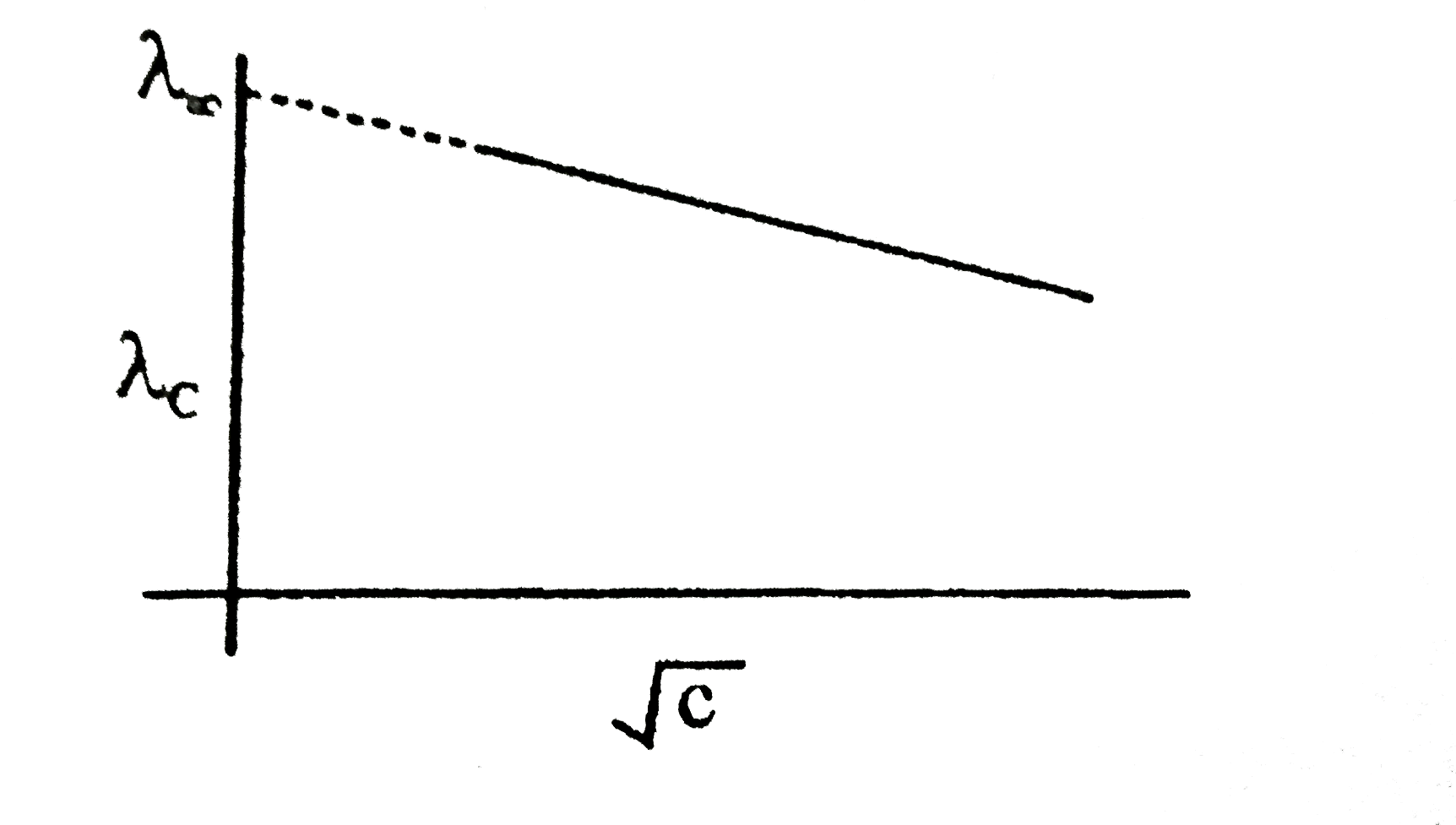The equivalent conductance of NaCl at concentration C and at infinite dilution are λC and λ∞, respectively . The correct relationship between λC and λ∞is given as:
(where the constant B is positive).
λC=λ∞−(B)√C
λC=λ∞+(B)√C
λC=λ∞+(B)C
λC=λ∞−(B)C
The correct Answer is:A

λC=λ∞−B√C, Debye-Huckle equation
Topper's Solved these Questions
- ELECTROCHEMISTRYBOOK - ALLENCHAPTER - ELECTROCHEMISTRYEXERCISE - EXERCISE -05 [B]
38 Videos
- ELECTROCHEMISTRYBOOK - ALLENCHAPTER - ELECTROCHEMISTRYEXERCISE - EXERCISE-04 [B]
23 Videos
- CHEMISTRY AT A GLANCEBOOK - ALLENCHAPTER - CHEMISTRY AT A GLANCEEXERCISE - ORGANIC CHEMISTRY
472 Videos
- HYDROCARBONBOOK - ALLENCHAPTER - HYDROCARBONEXERCISE - MCQ
15 Videos
Similar Questions
The conductance (G) is
View SolutionIn the figure shown a sinusoidal wave is generated at the end 'A'. The wave travels along positive x−axis and during its motions it encounter another string BC at the junction 'B' at x=0. The density of strings AB and BC and ρ and 9ρ respectively and their radii of cross sections are 2r and r. The wave funcation. amplitude and wavelength of incident wavs are respectively yr,Ar,λr and yt,At,λt repectively

The ratio of wavelengths λr to λt (i.e. λr:λt) will be
View Solution
Knowledge Check
Two particles A and B of de-broglie wavelength λ1andλ2 combine to from a particle C. The process conserves momentum. Find the de-Broglie wavelength of the particle C. (The motion is one dimensional).
AλABλAλB/(λA+λB)CλAλB/|λA−λB|Dboth (b) and ( c)
The molar conductance of NaCl varies with the concentration as shown in the following table and all values follows the equation.
λcm=λ∞m−b√C where λcm= molar specific conductance λ∞m= molar specific conductance at infinite dilution C=molar concentration

When a certain conductivity cell (C) was filled with 25×10−4(M)NaCl solution, the resistance of the cell was found to be 1000 ohm. At infinite dilution, conductance of Cl− and SO2−4 are 80ohm−1cm2mole−1 and 160ohm−1cm2mole−1 respectively.
What is the molar conductance of NaCl at infinite dilution?
View SolutionThe molar conductance of NaCl varies with the concentration as shown in the following table and all values follows the equation.
λcm=λ∞m−b√C where λcm= molar specific conductance λ∞m= molar specific conductance at infinite dilution C=molar concentration

When a certain conductivity cell (C) was filled with 25×10−4(M)NaCl solution, the resistance of the cell was found to be 1000 ohm. At infinite dilution, conductance of Cl− and SO2−4 are 80ohm−1cm2mole−1 and 160ohm−1cm2mole−1 respectively.
What is the cell constant of the conductivity cell (C)?
View SolutionCalculate the equivalent conductance of NH4OH at infinite dilution using Kohlrausch law. Given that Λ0 values of NaOH,NaCIandNH4Cl are respectively 217.4, 108.9 and 129ohm−1cm2.
View SolutionAt infinite dilution, the equivalent conductivity of the electrolyte is
given by the expression:
∞⋀eq=λ∞(+)+λ∞(−)
The above expression is given by
View SolutionThe molar conductivities Λ∘NaOAc and Λ∘HCI at infinite dilution is watter at 25∘C are 91.0 and 426.2Scm∘/mol respectively. To calculate Λ2HOAc, the additional value required is:
View SolutionThe molar conductivity of NaCl, CH3COONa and HCl at infinite dilution is 126.45, 91.0 and 426.16 ohm−1cm2mol−1 respectively. Calculate the molar conductivity (λ∞m) for CH3COOH at infinite dilution.
View SolutionTwo particles A and B of de-broglie wavelength λ1andλ2 combine to from a particle C. The process conserves momentum. Find the de-Broglie wavelength of the particle C. (The motion is one dimensional).
View Solution
